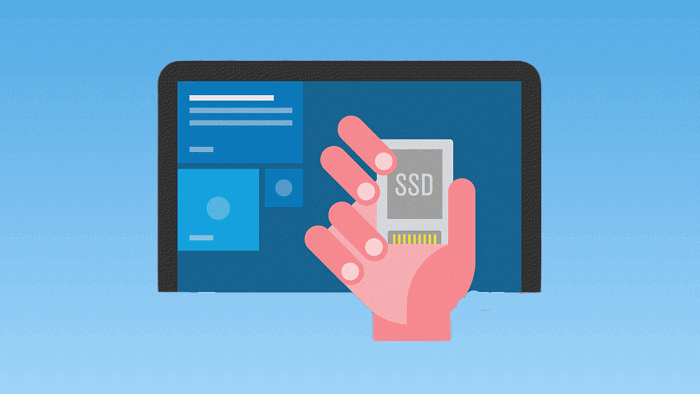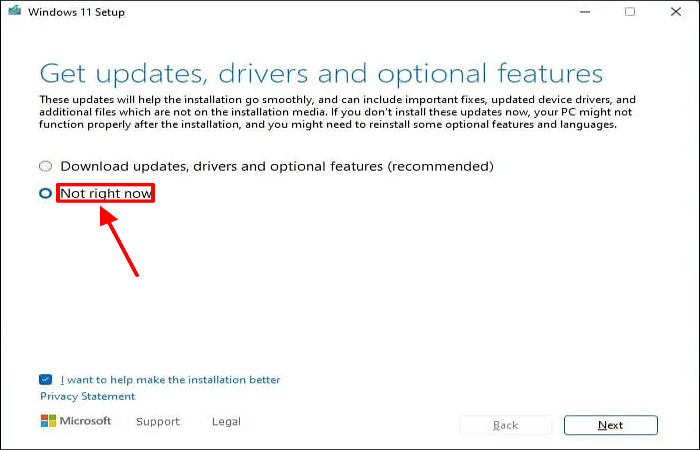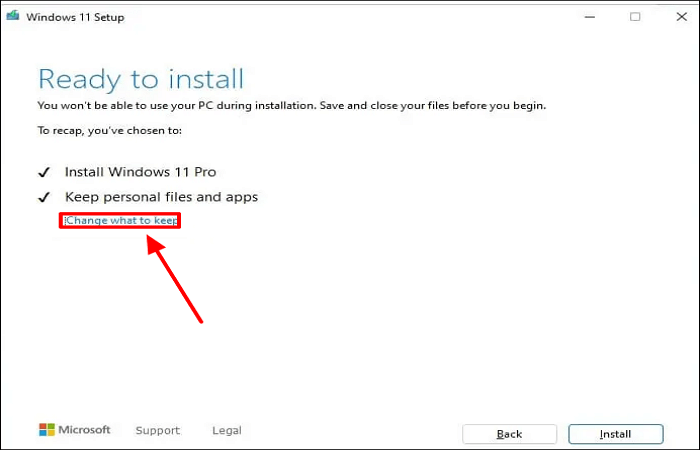How to Install Windows on New SSD Without USB in Every Possible Way
When installing Windows on an SSD without a USB, the most recommended way on Google searches is to do a clean install. Do you know how to install Windows on a new SSD without USB? And how to install Windows 10 on a new hard drive without disk or USB? This tutorial shows you two ways to install Windows on a new SSD, with detailed operations steps inside.
Can I Install Windows on a New SSD
When Windows 11, Windows 10, Windows 8, or Windows 7 are loading and running slowly on a hard disk drive (HDD), installing Windows on a new solid-state drive (SSD) is an effective way to give your Windows computer a fresh start. It is widely known that an SSD can be a better boot disk than an HDD because, compared with HDD, SSD has less noise, quicker access time, lower latency, etc.

Therefore, many computer users prefer to upgrade the old system disk to SSD or install the operating system (OS) on a new SSD to make the computer boot up faster and run smoothly even if multiple programs are in the background. So, how to install Windows onto SSD without using a USB?
Two Ways to Install Windows on SSD Without USB
Installing Windows on a new SSD without a USB can be difficult, but there are a few ways out. Here, I will share two ways to install Windows on SSD. They are: creating a Windows system image to the target drive or cloning system via backup software and reinstalling Windows on SSD by using ISO. Let's see how they work:
| Workable Solutions | Step-by-step Troubleshooting |
|---|---|
| Solution 1. Install Windows on New SSD via Professional Backup Software | Installing Windows OS on a new SSD without USB, the easiest way...Full steps |
| Solution 2. Install Windows on New SSD by Using ISO | In most cases, you can choose the Windows 10 Media Creation Tool...Full steps |
Solution 1. Install Windows on New SSD via Professional Backup Software
Installing Windows OS on a new SSD without USB, the easiest way is to migrate Windows 10/8/7 from the hard disk to the new SSD and boot from it. Here, I will introduce an easy-to-use backup software - Qiling Backup, to help you create a system image or clone system to install Windows on a new SSD without a USB.
Qiling Backup Home is a multi-functional, easy-to-use backup and recovery tool for Windows 11/10/8/7. It allows you to migrate Windows 10 to SSD and clone a hard drive or system. You can also utilize it to back up files, systems, disks, partitions, etc. In addition, it enables you to create automatic backups, scheduled backups, and incremental and differential backups.
The following are the detailed steps to clone a system.
Step 1. On the main page, find and click "Tools and utilities", system clone and other utilities are here.

Step 2. Qiling Backup will automatically select the boot and system partition, choose the target disk and click "Next."

*System clone will wipe out all data and does not support cloning MBR disk to GPT or vice versa. Make sure that the partition style of the source disk and the target disk are the same.

Step 3. If the target disk is a SSD, choose optimize for SSD in the advanced options.

Step 4. Click "Proceed" to start cloning.
Besides, if you want to install Windows on a dissimilar computer using an SSD instead of a USB, you can also use Qiling Backup as universal restore software.
Solution 2. Install Windows on New SSD by Using ISO
In most cases, you can choose the Windows 10 Media Creation Tool to perform an in-place upgrade or create a bootable USB flash drive to do a clean installation of Windows. Still, it is also possible to load the ISO file using the Windows image mounting feature to start the Windows 11 setup and carry out the installation.
Another way to install Windows on a new SSD without a USB is to use a Windows ISO file. By using ISO, you do not need a bootable USB drive or Media Creation Tool to install Windows 11 on a computer running Windows 10. You can mount the ISO file in File Explorer and run the upgrade setup. The following are the detailed steps to do an upgrade or clean installation of Windows 11 without a USB or Media Creation Tool.
Step 1. Download Windows 11 ISO file.
Step 2. Right-click on the ISO file, choose the Open with sub-menu and then select the Windows Explorer option.
Step 3. Click on the SSD drive already connected to the computer from the left navigation pane.
Step 4. Double-click on the Setup file to start the Windows 11 upgrade process.
Step 5. You can decide whether to select the Change how Windows Setup downloads updates option.

Step 6. Choose the Not right now option, and click on Next.

Step 7. Click on Accept to agree to the terms and click on Install to upgrade while keeping your files and apps.

Note: If you want to install Windows 11 completely from scratch, select the Nothing option under Change what to keep, click the Next button, and then click the Install button.
After completing these instructions, the computer will restart multiple times as the updating process starts. After installation, you might need to complete Windows 11 configuration by going through the out-of-box experience (OOBE).
The Bottom Line
This is all about how to install Windows on new SSD without USB. You can select any method this article offers as you like. But considering time, reliability, flexibility, and operability, we suggest you use Qiling Backup to install your Windows on a new SSD without a USB. Qiling Backup is an easy-to-use and multi-functional backup and recovery tool. It can meet your diverse backup needs and is suitable for free, home, or business users. Do not hesitate to try it!
FAQs
1. Is there a way to reinstall Windows 10 to an SSD without cloning?
You can perform a clean installation instead of cloning if you do not want to clone Windows 10. A clean installation will wipe everything on the hard disk before installing a fresh copy of Windows.
2. How do I activate my new SSD?
Move your mouse to the lower-left corner of your desktop and right-click the Start icon, then choose "Disk Management." When Disk Management opens, a pop-up will appear, prompting you to initialize SSD.
3. Why is my new SSD not bootable?
If your computer cannot boot after upgrading or replacing the system disk from HDD to SSD, this may be because you fail to reset the boot order in BIOS.
4. Why won't Windows install on my SSD?
This is typically in the prompt informing you that Windows cannot install on your disk because the hardware cannot support booting to the disk. It might also ask you to enable the disk controller in the BIOS menu.
Related Articles
- How to Create a Schedule to Backup User Files[Step-by-Step Guide]
- Windows 11 Backup Options are Missing? Your Ultimate Guide Is Here
- 3-Minute Guide | How to Restore Outlook Backup with Ease
- How to Backup SSD to Image with The Best SSD Image Backup Software [Full Guide]